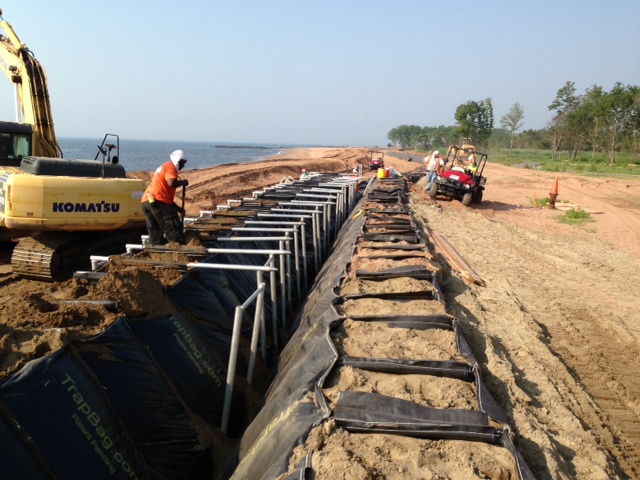Projects & Case Studies
Fabric forming has emerged as a groundbreaking method in modern architecture, blending artistry, efficiency, and sustainability. By using flexible textile molds instead of rigid formwork, architects and engineers can create concrete structures that are lighter, stronger, and visually stunning. Across the globe, numerous projects and case studies demonstrate how fabric forming is transforming the built environment.
Architectural Landmarks
Fabric forming has been used in architectural projects to produce structures that are both functional and artistic.
-
Curved Concrete Columns – Experimental buildings in Canada and the UK have showcased how fabric molds can produce slender, organic columns that support large spans while reducing material usage.
-
Fluid Façade Elements – Designers have employed fabric forming to create curved wall panels and façade features, adding dynamic aesthetics to public and commercial buildings.
Experimental Pavilions
Universities and research institutions have led the way with fabric-formed pavilions, testing the limits of this innovative technology.
-
At the University of Manitoba, fabric formwork research produced pavilions with flowing concrete shells, demonstrating the efficiency of textile molds in creating complex geometries.
-
European design studios have developed temporary exhibition structures that highlight the sculptural potential of fabric-formed concrete.
Bridges & Infrastructure
Beyond architecture, fabric forming has influenced infrastructure projects. Lightweight yet strong fabric molds have been used in casting bridge supports, foundations, and retaining walls. These applications highlight the method’s ability to optimize structural performance while reducing construction costs and environmental impact.
Furniture & Interior Design
Smaller-scale projects also showcase the versatility of fabric forming. Case studies include:
-
Concrete Benches & Seating – Fabric molds allow designers to create ergonomic seating with elegant curves.
-
Lighting Fixtures & Sculptural Pieces – Innovative studios have used textile molds to craft artistic interior elements, proving that fabric forming is not limited to structural design.
Sustainability Case Studies
Fabric forming has been celebrated for its eco-friendly potential. By reducing the amount of concrete required, it lowers the carbon footprint of construction. Projects in Asia and North America have demonstrated a 20–30% material savings, proving its role in sustainable design.
Lessons Learned
The case studies reveal several key insights:
-
Flexibility – Fabric molds enable forms that rigid systems cannot achieve.
-
Efficiency – Reduced material use leads to cost savings.
-
Aesthetics – Fluid, natural forms enhance the artistic value of concrete.
-
Scalability – From furniture to infrastructure, the method works across scales.
Looking Forward
As these projects show, fabric forming is more than an experimental technique—it is a new language of design. With growing demand for sustainable and creative solutions, architects and engineers are expected to adopt fabric forming more widely in the coming decades.
Through innovative projects and real-world case studies, fabric forming continues to redefine the future of architecture and concrete design.
